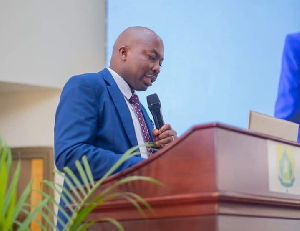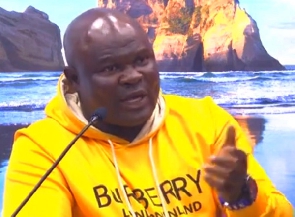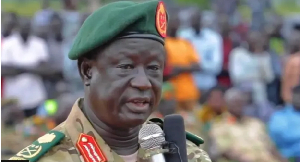The Time-of-Use (ToU) electricity tariff policy proposal by H.E John Dramani Mahama during his Energy Sector Engagement event stands out as one of the most pragmatic and forward-thinking strategies in the energy sector.
Amidst Ghana's economic struggles and its debt-ridden power sector, where Independent Power Producers (IPPs) face substantial arrears, the ToU policy holds potential for economic recovery. This policy offers a dual advantage—addressing the financial sustainability of the power sector while fostering a reduction in electricity tariffs to support businesses and the public.
I explore the strategic and practical importance of the ToU policy as a tool to reduce the cost of doing business in Ghana and how it can mitigate the financial burden in the energy sector. By looking at international references and regional electricity market opportunities, I foresee the policy's potential for long-term economic gains and sectoral reset.
Understanding Time-of-Use (ToU) Electricity Tariffs
The ToU tariff system is a pricing mechanism where the cost of electricity varies based on the time of day, promoting efficient energy use. Under this system, energy prices are generally higher during periods of peak demand and lower during off-peak periods.
The principle behind this approach is to charge more for electricity during peak demand hours, when the power grid is under the most strain, and less during off-peak hours, when demand is lower.
By aligning electricity prices with demand patterns, ToU tariffs encourage consumers—especially businesses and industries—to shift their consumption to off-peak periods, reducing overall system strain and promoting energy efficiency thereby alleviating pressure on the national grid and reducing overall costs for both providers and consumers.
For example, in a ToU tariff structure:
Peak hours (e.g., 6:00 PM to 9:00 PM) would see higher electricity prices to reflect the increased cost of generating power when demand is at its highest.
Off-peak hours (e.g., 11:00 PM to 5:00 AM) would offer significantly reduced rates to incentivize consumers to use energy during periods of lower demand.
This model is particularly effective for industries and households that can adjust their operational schedules, such as manufacturing plants that can shift production to overnight hours or households that can run appliances like washing machines and air conditioners at night.
Mahama's foresight to introduce this policy lies in its capacity to provide a flexible electricity pricing model that is directly aligned with demand, effectively optimizing energy consumption. In an economy where high energy costs are a primary concern for industries and households alike, the ToU tariff model has the potential to drive down costs, enhance energy efficiency, and provide economic relief.
Economic Recovery Through Reduced Electricity Tariffs
One of the most pressing issues facing Ghana’s economy today is the high cost of electricity, which directly impacts the cost of living and doing business. The ToU policy provides a rational economic recovery model aimed at fundamentally reducing these costs. By allowing industries and consumers to schedule energy-intensive activities during off-peak times when tariffs are lower, energy expenditure can be significantly reduced.
For industries that operate continuously, such as manufacturing, mining, and service sectors, electricity bills constitute a large portion of operational expenses. Through strategic scheduling, companies can shift non-essential processes to low-tariff periods, thereby cutting their electricity expenses by up to 30%. Lower production costs translate into lower consumer prices, contributing to inflation control and improving the overall business environment.
Furthermore, for households, adopting energy-efficient practices and using electricity during cheaper periods would mean significant savings. Reduced electricity bills, especially in lower-income communities, would relieve financial pressure, leaving more disposable income for essential goods and services, thus stimulating local economies.
Addressing the Power Sector's Financial Struggles
The power sector, particularly the Independent Power Producers (IPPs), faces significant financial difficulties, with arrears reaching unsustainable levels. The ToU tariff system offers a means to address these financial challenges. By encouraging efficient energy consumption, the policy could reduce peak energy demand, allowing excess capacity to be sold in the regional electricity market, creating additional revenue streams for IPPs.
IPPs in Ghana have over the years struggled with being underutilized due to inconsistent demand from the national grid, while contracts signed undertake-or-pay agreements mean they are still owed for unused capacity. Exporting this idle capacity to neighboring countries in the West African Power Pool (WAPP) offers a sustainable solution. Licensing IPPs to trade electricity regionally could transform what is currently a liability into a strategic asset.
Countries such as Burkina Faso, Niger, Togo, Benin etc regularly face energy shortages, and by positioning Ghana’s IPPs to supply surplus power during off-peak times, both the financial health of the IPPs and the broader economy can be significantly improved. Increased exports would provide hard currency inflows, improving the sector’s financial sustainability.
International Examples of ToU Policy Success
Several countries have successfully implemented ToU tariffs as part of a broader strategy to manage energy demand and improve sectoral efficiency.These examples demonstrate that a well-implemented ToU policy not only optimizes the energy sector but also promotes economic stability by lowering operational costs and supporting the financial viability of power providers.
California, USA: The state implemented ToU tariffs in phases to manage its energy demand. Consumers who shifted their electricity usage to off-peak periods reported significant savings. Additionally, the system helped reduce the frequency of power outages during periods of high demand, stabilizing the grid and reducing the need for expensive infrastructure expansion.
Ontario, Canada: ToU tariffs have been in place since 2011. They have enabled the government to better manage grid demand, particularly during harsh winter months when energy use spikes. Ontario’s energy market regulator has recorded reductions in peak-time demand, which has allowed energy providers to reduce their operational costs and pass on savings to consumers.
South Africa: Facing energy shortages and load-shedding challenges, South Africa’s energy regulator adopted ToU tariffs as part of an energy efficiency strategy. The policy encouraged businesses to optimize their energy use, thus helping to manage grid reliability and reduce operational disruptions during peak periods.
Regional Electricity Market and Idle Capacity Utilization
Ghana’s strategic location in West Africa and its relatively advanced energy infrastructure make it a prime candidate to become a regional energy hub. Licensing and supporting IPPs to export surplus energy align with the long-term goals of the West African Power Pool (WAPP), which seeks to create a regional electricity market where power can flow seamlessly across borders.
Incorporating the ToU tariff policy within this regional context would provide the necessary price signals to encourage greater participation in regional electricity trade. By incentivizing off-peak production, Ghanaian IPPs can capitalize on export opportunities, especially during periods when domestic demand is low. This strategy could help reduce the debt burden, caused by capacity under-utilization, on Ghana’s power sector, while also generating new revenue streams.
Benefits of the ToU Policy
1. Reduced Cost of Living: By lowering electricity bills, households will have more disposable income, improving standards of living and contributing to economic recovery.
2. Improved Business Competitiveness: Businesses will see a reduction in operating costs, making Ghana more attractive for investment and supporting industrial growth.
3. Debt Mitigation for IPPs: Licensing IPPs to export surplus capacity provides a mechanism for reducing debts owed to these entities while enhancing their financial sustainability and obviating ECG from the accumulation of idle capacity charges.
4. Grid Stability: The shift of consumption to off-peak times will ease the strain on the grid during peak periods, reducing the likelihood of blackouts and infrastructure stress.
5. Regional Trade Opportunities: By participating in the West African Power Pool, Ghana can expand its role as a regional electricity supplier, driving economic growth through energy exports.
Conclusion
The Time-of-Use electricity tariff policy, introduced under John Dramani Mahama, is a strategic initiative that addresses multiple challenges within Ghana’s economy and energy sector. By reducing electricity costs for both consumers and businesses, the policy contributes to economic recovery and stabilizes the cost of living. Furthermore, by enhancing the financial viability of IPPs through regional energy trade, Ghana has the opportunity to reset its debt-ridden power sector and position itself as a leader in the regional electricity market.
This policy, with its many long-term benefits, should be considered a vital component of Ghana’s broader strategy for economic revitalization and power sector sustainability.
Opinions of Wednesday, 18 September 2024
Columnist: Elikplim Kwabla Apetorgbor



















